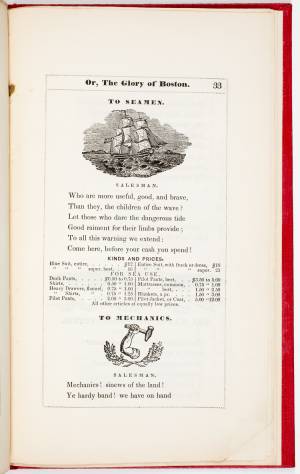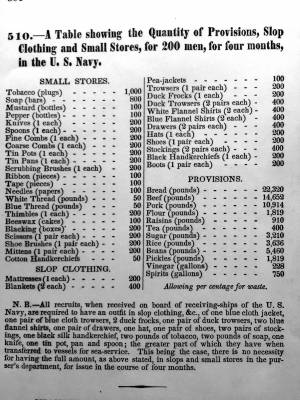An online project under the direction of the CAPE ANN MUSEUM
Historical Materials
Historical Materials » Maritime & Other Industries & Facilities » Clothing and Gear
Clothing and Gear
Most sailors in the merchant ships of Lane's day made their own clothes on board, since their pay did not allow them to purchase ready-made items. A common clothing item was the canvas hat with a brim which was coated with tar to make it waterproof. This can be seen, along with the signature red flannel shirts, in many of Lane's paintings. Later on, fine canvas was impregnated with tar to make rudimentary waterproof oilskins. Fishermen's wives would sew red flannel shirts, knit woollen socks and "nippers," hand protectors for hauling in fishing line. Various lengths of cloth were purchased to make fishermans' pants and jackets. Good quality clothing and changes of clothing were critical to the success of a voyage, since sailors who became too dirty were vulnerable to typhus-carrying lice. In almost all ships, time was set aside during a voyage for making and mending sailors' clothes.
References:
Peter Gott, The Cape Ann Fisherman (Boston: John P. Jewett and Co., 1856).
Peter Kemp, ed., Oxford Companion to Ships and the Sea (Oxford University Press, 1976).
See p. 33.
Also filed under: Oak Hall »

